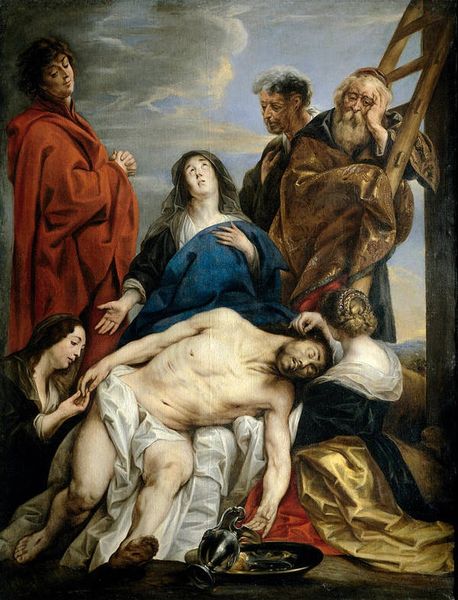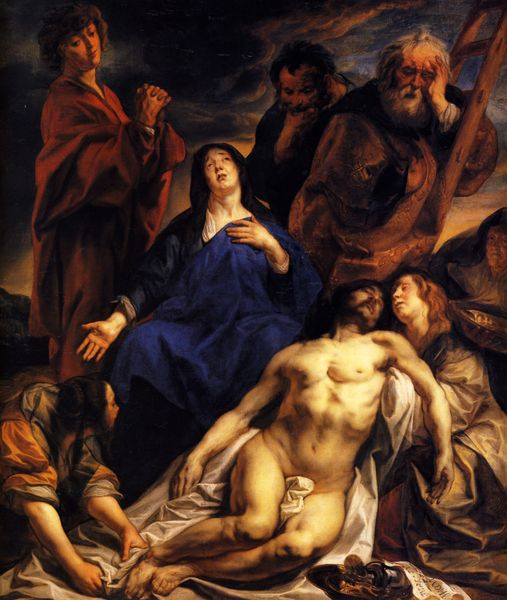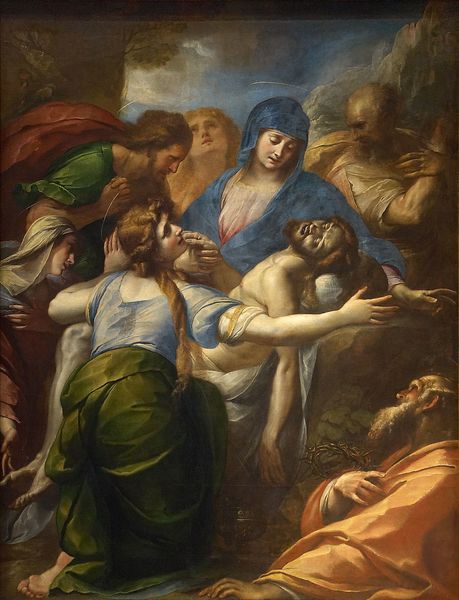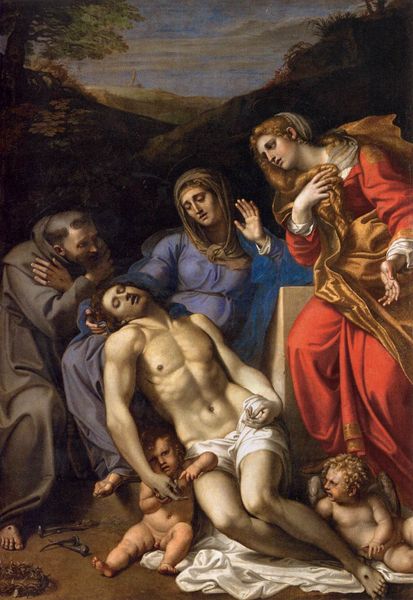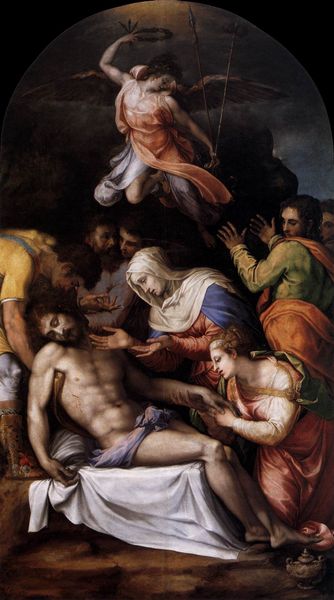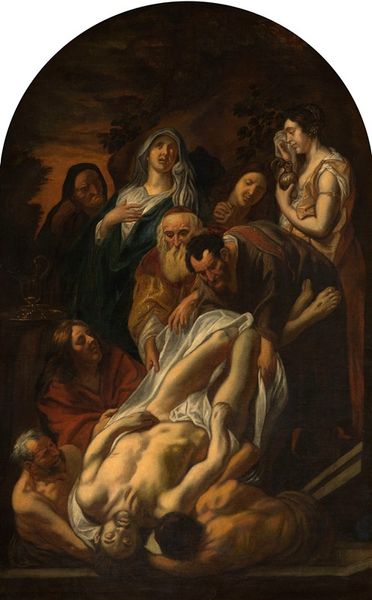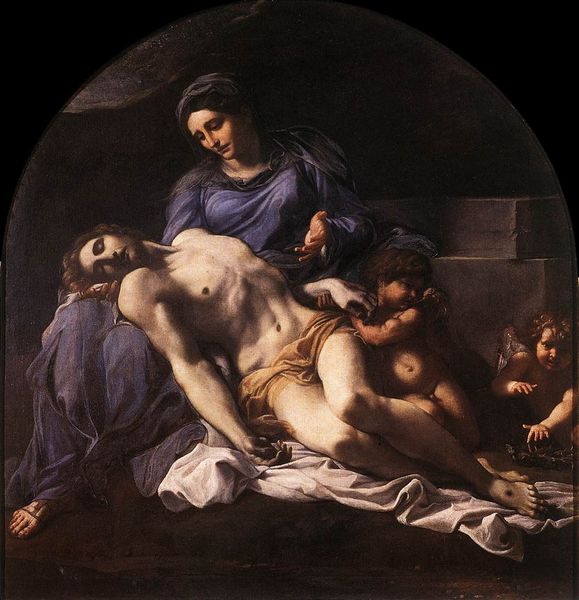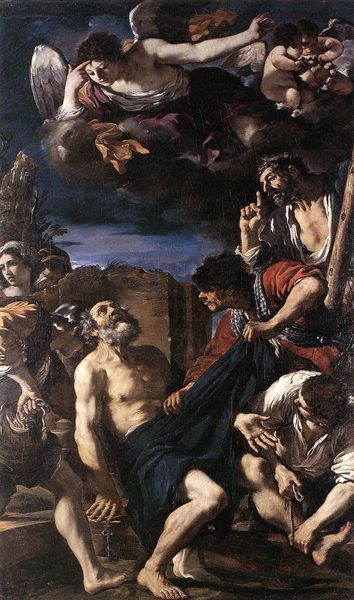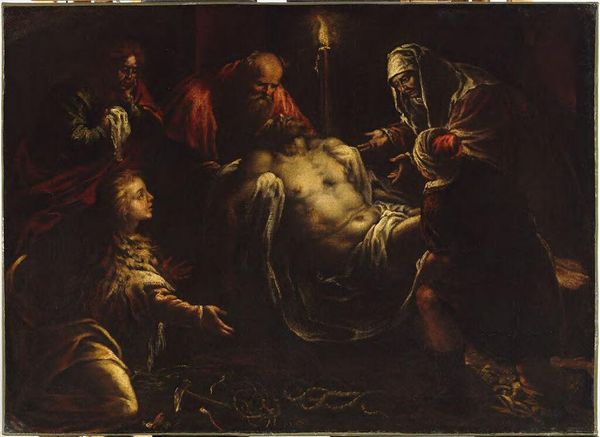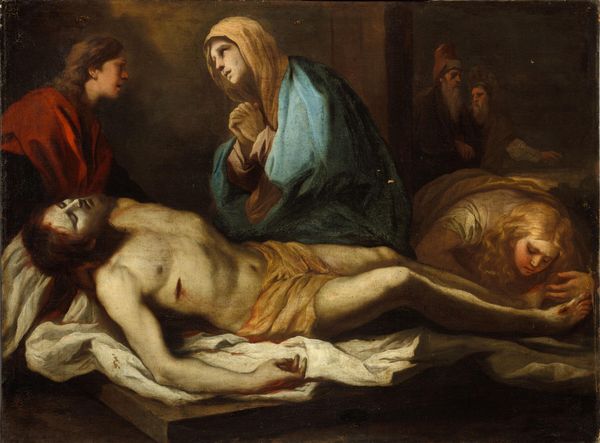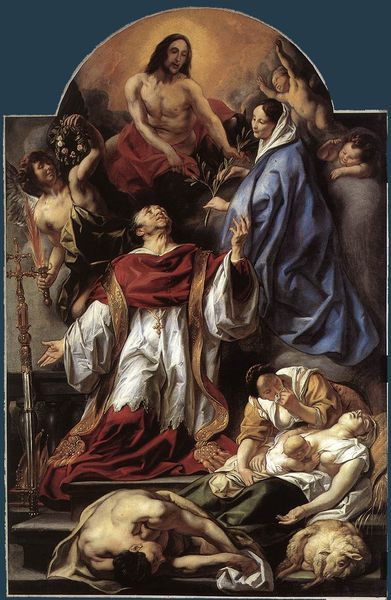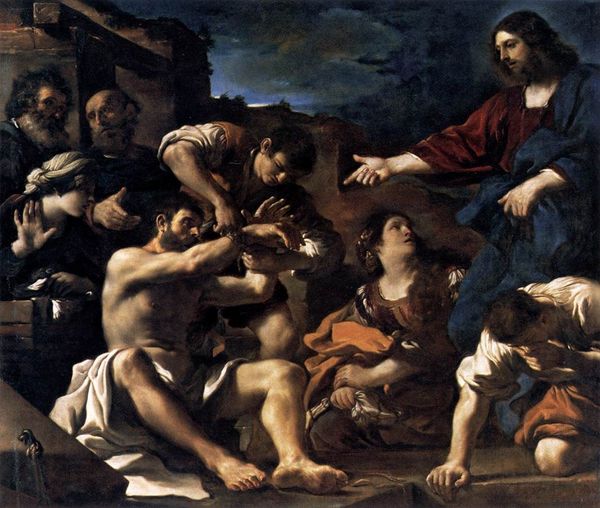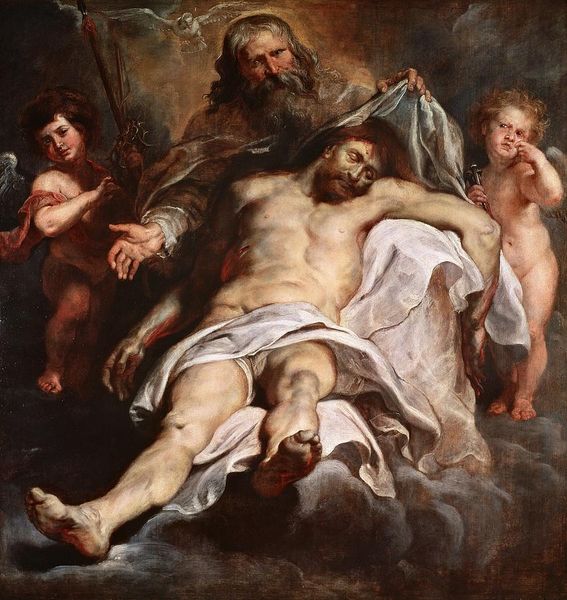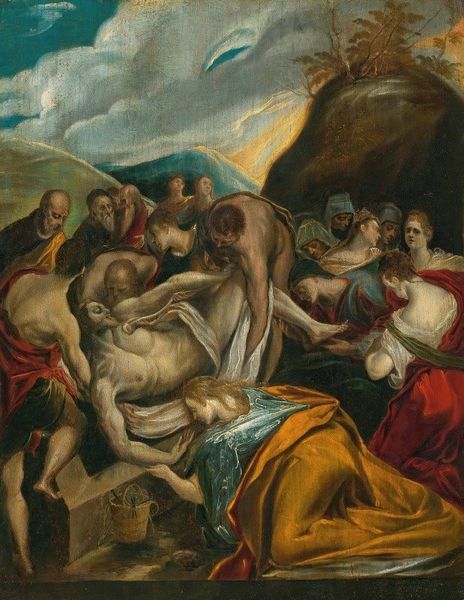
painting, oil-paint
#
portrait
#
baroque
#
painting
#
oil-paint
#
figuration
#
oil painting
#
history-painting
Copyright: Public domain
Editor: This is "The Deposition," an oil painting attributed to Sebastiano Conca. The scene is overwhelmingly melancholic, heavy with sorrow. What sort of context might illuminate its emotional weight for us? Curator: Beyond the immediate grief depicted, I think it's essential to consider the socio-political context in which Conca was working. Religious art in this period often served as a potent reminder of power dynamics – who held it, who suffered under it. How do you think Conca engages with that dynamic here? Editor: I hadn't considered that perspective. The passivity of Christ's body certainly speaks to powerlessness, and maybe the Virgin Mary’s grief also reflects the suffering of those without agency. But what about the cherubs? Curator: Ah, a fantastic observation! The cherubs can be read as a softening of the political blow, an offering of divine comfort that reinforces a specific, perhaps idealized, religious ideology. But do they really alleviate the feeling of hopelessness, or do they serve to highlight it? Editor: I see what you mean. Maybe their presence is more about enforcing the idea that suffering has a divine purpose rather than truly consoling those who suffer. It definitely reframes the scene. Curator: Precisely. And in that reframing, Conca, perhaps subtly, participates in the discourse around power and submission that defined his era. What do you think our contemporary lens can add to interpreting art from such a different context? Editor: I guess we can now question more explicitly whether such art truly consoles, or whether it normalizes oppression. Curator: Exactly! By interrogating these historical works, we can better understand how visual culture has historically shaped, and continues to shape, our understanding of justice, power, and empathy. Editor: I hadn’t considered how an artwork like this could have a deeper, more socially critical layer. I’m left thinking about how easily such perspectives are missed.
Comments
No comments
Be the first to comment and join the conversation on the ultimate creative platform.
